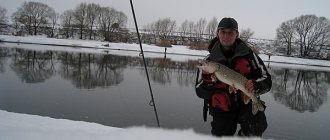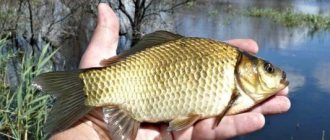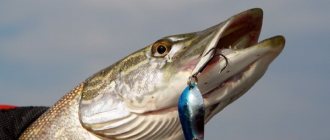First actions when seeing a drowning person
- When you see a drowning person, the first thing you need to do is notify specialized rescuers.
- If possible, throw a lifebuoy, an inflatable mattress, etc. to the drowning person.
- If you decide to swim to the drowning person yourself, you should remove as much outer clothing as possible, since it will only get in the way.
How to swim to a drowning person
- You need to swim up to a drowning person only from behind, because a person who is drowning is in a stressful situation and has practically no control over himself. He can grab onto his rescuer with considerable force and pull him to the bottom;
- If you cannot swim invisible to a drowning person, you need to dive a couple of meters before him and, swimming up to the drowning person, grab him. Thus, the victim will not be able to harm either himself or his rescuer.
Resuscitation measures
A person’s breathing reflexes disappear 4-6 minutes after his lungs are completely filled with water. Doctors call this condition paralysis of the respiratory center. The victim's heart stops after about 15 minutes. But both breathing and heart rate can be restored. To do this, you need to immediately begin resuscitation measures. There have been cases when a person was able to be returned from the other world almost an hour after drowning.
- Lay the victim on his side. Using a finger wrapped in a towel or scarf, remove silt and sand from his mouth. The mouth must be clean.
- Get down on one knee. Place the drowned person with his stomach down on his free knee. The victim's head should be below the chest. Holding his head, press him from behind in the area of his shoulder blades. Water will flow from the victim's stomach and lungs. If the victim is too large and heavy and it is not possible to put him on your knee, take him from below, under the stomach, clasping your hands together, and lift him up. You need to lift the victim like a barbell - with your feet. The arms are fully extended.
First you need to drain the water from the victim’s respiratory tract and stomach. To do this, you need to put it on your knee so that your head is lower than your chest.
- When the water drains from the victim, place him on his back. Check to see if he is breathing. Lift your eyelid and see if his pupils react to light. Check your pulse. To do this, you need to place your fingers on the carotid artery on the victim’s neck above the collarbones. If there is no pulse, you need to do chest compressions. If the heart is working - only artificial respiration.
#IMPORTANT
If there is a pulse, even a very weak one, you cannot massage the heart: you can achieve exactly the opposite - complete cardiac arrest. Be careful, don't make a mistake.
- Indirect cardiac massage and artificial respiration do this. Place your palm on the victim's chest near the heart. Place your other palm on top at a slight angle. Raise your fingers so that they do not touch the victim’s chest. You need to apply pressure with the heel of your palm. Use strong, sharp movements to apply pressure to the victim’s chest 4-5 times. At the same time, his chest should fall down by about 4 cm. Press not with the strength of your hands, but with the weight of your body, as if leaning on the victim. After you have applied pressure, take a full breath of air and, pressing your mouth tightly against the victim’s mouth, inhale this air into him. If you do everything correctly, the victim's chest will rise. This is an indication that air has entered the lungs. Repeat the same thing. You should get about 16 blows and 60-90 chest compressions per minute. Now check your pulse. If he does not appear, resuscitation measures must be continued. Don't stop them, even if you think they don't make sense: miracles happen sometimes.
#IMPORTANT
Monitor the position of the victim's tongue so that it does not block the airway. Be prepared for the possibility that the victim may vomit. In this case, he must be quickly turned on his side so that he does not choke on the vomit. Cardiac massage should not be done on a soft surface, so as not to damage the liver.
Indirect cardiac massage should be done with the heel of the palm, with straight arms, using the weight of your body, not the strength of your hands.
- If there was no one else to call an ambulance, call it after the drowned person has a pulse and begins to breathe. If there is someone else next to you, an ambulance should be called immediately after it becomes clear that resuscitation measures cannot be avoided. You can also shout from the water for someone to call her.
✅ Drowning is an insured event
If the drowned person has insurance, all costs of resuscitation measures will be covered by the insurance company, except in cases where the victim drowned under the influence of alcohol.
- Rub the victim with cologne, alcohol, or just with your hands. Particular attention should be paid to the feet. There are important nerve endings there, they will give strength to the entire body. Put dry clothes on the victim, lay him on his side in case he starts vomiting, and wrap him up: when he comes to, he will be very cold.
- Give the victim strong, sweet tea. You can drop valerian or corvalol as a sedative.
- If it is impossible to call an ambulance to the place where you are, or this could not be done, take the victim to the hospital.
A person is able to stay on the surface of the water for up to a minute after he begins to drown. But only if he is ready to fight for life. In a minute, an experienced swimmer swims about a hundred meters. This is exactly the distance at which we can confidently look at a drowning person and understand that the person is in trouble. And it turns out that the stars converge: if one fights, and the second, without wasting time, rushes to save him, then everything will work out.
Author: Dmitry Ezhkov.
Capturing and transporting a drowning person
Methods of transportation depend only on the condition of the person who is drowning.
If the drowning person remains relatively calm, can control his body and obeys the advice of the person saving him, then he can be brought to land using this method: you need to swim on your stomach with breaststroke, and the drowning person should hold on to the rescuer’s shoulder, while lying on the water and helping The rescuer moves forward with small jerks with his legs.
If the person who is drowning is in shock or panic and does not understand what is being said to him, then it is better to use the following types of transportation:
- Turn the person around and press him towards you, firmly grabbing him by the armpits or chin. Swim breaststroke on your back or side in this position.
- Turn the person's back to you and grab him by the armpits or head, swim breaststroke on your side in this position.
- Turn the person being rescued onto his back, grab him by the armpit with one hand and, clasping his forearm on the other side, swim on his side, rowing with his unoccupied arm and legs. This is the most difficult type of transportation and is used only when the drowning person is very scared.
- If a person is already submerged at the bottom of a reservoir, then he will need to dive and swim along the bottom where the victim may presumably be located.
- Having found a drowning person, you need to grab his armpits or arms, then push off with force from the bottom and emerge to the surface of the water, working as quickly as possible with your legs and unoccupied hand.
Having emerged, you should turn the person’s back to you and, without hesitating a minute longer, swim with him to the nearest shore:
- If a drowning person is at the bottom of a reservoir facing the bottom, then you need to swim to him from the feet.
- If he is at the bottom face up, then you need to approach him from the side of the head.
First aid for drowning
If the saved one is conscious
Actions to help a drowning person breathe independently and have a pulse include warming and measures that increase blood circulation and oxygen flow. The victim needs to remove wet clothes, place him on a hard bed, raising his legs in order to increase blood flow to the head (brain). Rub the body, cover with a blanket, drink warm tea. And be sure to call an ambulance, since the rescued person may subsequently develop complications from the cardiovascular, respiratory or nervous systems.
In case of white asphyxia
When a rescued person is unconscious, cardiopulmonary resuscitation must be started immediately, as he may die from hypoxia. First, you need to clear the victim’s mouth and nose of silt, sand, and algae with a finger wrapped in a soft cloth.
Usually, with white asphyxia, there is little water in the lungs, but you need to let it leave the airways by placing the rescued person on his knee, stomach down, with his head down. Apply pressure to the back, ribs, or lightly hit between the shoulder blades. After freeing from water, place it on a hard surface: sand, earth, floor. Place a roll of a towel under your neck so that you tilt your head with your chin up, and begin mouth-to-mouth artificial respiration if your mouth is not closed.
Grab the victim's cheeks so that his mouth does not close. At the same time, pinch his nose with your fingers. Take a deep breath and exhale the air into the victim’s mouth. Wait a few seconds. If his chest rises after inhaling air, then you are acting correctly; continue such injections 12-14 times per minute (one injection every 4-5 seconds) until the person being rescued begins to breathe on his own. If there is no pulse, you need to simultaneously perform an indirect cardiac massage.
With deeper – blue asphyxia
If a drowning person is not breathing and the pulse in the neck cannot be felt, the airways are filled with water, the face, lips, and fingertips are blue due to pronounced hypoxia, first aid should be provided intensively and for a long time in the form of mouth-to-mouth artificial respiration in combination with cardiac massage.
If the mouth cannot be opened, artificial respiration is performed “from mouth to nose”, simultaneously with a heart massage, after clearing the airways of algae, silt and water.
Indirect cardiac massage is done as follows: placing the palm two centimeters above the base of the sternum, covering it with the other hand and rhythmically pressing on the victim’s body at a pace of 1 pressure per second. If the rescuer acts alone, he needs to alternate each blowing of air into the victim’s mouth or nose with 4-5 presses on the sternum area. The intensity of compressions on the sternum should correspond to the age of the drowning person: adults - 60 times per minute with a deflection force of 4-5 cm, children under 8 years old - 100 compressions with a deflection of the chest of 3-4 cm, and infants - 120 compressions, 1. 5-2 cm of sternum deflection. Exceeding the force of cardiac massage can lead to broken ribs in the victim and aggravate his condition.
Providing first aid to a drowning person on land
First aid to a rescued person who is already on land must be provided depending on the degree of complexity of his condition. The first thing to check is the presence of breathing and pulse. If these indicators are normal and he is conscious, then the victim should be placed on a flat area so that the level of the head is slightly lower than the pelvis. Then you should free him from all wet clothes, wrap him in a blanket and call the doctors. It is also allowed to give a person warm tea.
If a person remains unconscious even after removing the fluid, but breathes rhythmically and has a clear pulse, then you need to act in this way:
- Raise the rescued person's head up and push back his lower jaw.
- Place your head slightly below the level of the pelvis and, using your own index finger wrapped in a scarf, clear the oral cavity of dirt, algae, remnants of vomit and other contaminants.
- Bring the rescued person to consciousness using alcohol for ammonia.
- Find a doctor.
If the rescued person has no breathing, no pulse and lies unconscious and unconscious, then this is the most dangerous condition that can result in the death of a person. To prevent death in such circumstances, and to act correctly, you must first determine the type of drowning, a characteristic feature of which is the color of the skin of the drowning person.
There are two of them:
- "White."
- "Blue."
If a person has a white skin color, then this is a “white” or “false” drowning. The breathing of these drowned people was interrupted due to a spasm of the glottis under the influence of a reflex on it when liquid enters. This type of drowning is easier to deal with and the chances of survival are much higher.
If a drowned person has bluish skin or skin with purple spots or tints, swelling (especially in the area of the lips and cheeks), then this is most likely a “blue” or “real” drowning. The breathing of such drowned people stops due to the infusion of fluid first into the lungs and then into the blood, which immediately contributes to the complete shutdown of the heart. A characteristic sign of this drowning is also very swollen veins and profusely diverging foam from the mouth area.
The action plan for helping these people looks like this:
- Establishing good airway openness. To do this, you need to clean your mouth of all kinds of contaminants that interfere with the normal passage of air (grass, algae, silt and others). But it often happens that the jaws of a drowning person clenched tightly in a spasm, and to open his mouth you need to use the following methods:
- A teaspoon is inserted between the jaws of the rescued person into the area of the molars, after which the jaws are opened.
- With the help of four fingers inserted into the molar area, you can also open the jaws.
- In order to prevent a person’s jaws from closing again, you need to put some non-dangerous object between them (a scarf, a knot from a scarf, etc.). After completing the task of opening the mouth of a drowning person, you need to turn his head to the side and, with your index finger wrapped in a scarf, clean the mouth, nose and nasopharynx of all contaminants.
- Then remove the entered fluid from the lungs of the drowning victim. To do this, a person is turned onto his stomach and placed on the knee of his half-bent leg so that his head is slightly below the level of the pelvis. Then, with the help of your hands, the lower chest area of the victim is compressed. This procedure should be done no longer than 15 seconds, after which you should proceed to perform artificial respiration.
Artificial respiration and indirect cardiac massage are done in combination, so they are carried out almost simultaneously with the victim in the following order:
- The victim is placed on a hard surface, since on a soft surface during cardiac massage there is a risk of liver damage. Remove the belt and free the chest from excess clothing with buttons, fasteners, etc.
- The rescuer places his hand, palm down, on the victim's lower chest so that the axis of the wrist joint is the same as the long axis of the sternum. The rescuer places the other hand on the outer area of the first hand. In this case, all fingers on both hands should be slightly raised so that they do not come into contact with the chest during the massage. Any other position of the hands is unacceptable as it may be dangerous for the victim.
- Then the rescuer leans towards the victim and, with clasped hands, sharply presses on his chest. In this case, it is necessary that the pressure is not in the left zone of the chest, but in the middle (in the sternum). The pressing force should be no more than 50 kg, so this massage should be achieved not so much through the strength of your hands, but through your own body weight.
- After briefly pressing on the chest, you need to release it so that the heart can relax after such pressure.
- The rate of cardiac massage for adults is 65-70 shocks every 60 seconds. Children under 7 years of age should be massaged with only one hand, and infants with two fingers (index and middle) with a frequency of up to 100–110 thrusts per 60 seconds.
After each session of chest compressions, you need to perform artificial respiration.
This is done this way:
- The head of a drowning man is thrown back upward.
- The rescuer draws air into his lungs and holds the exhalation a little, after which he closes both of the victim's nostrils (so that the air cannot escape from them) and tightly clamps the mouth area with his lips.
- The rescuer then takes a quick breath into the victim's airway.
- After completing the inhalation, the rescuer moves away from the person.
- In the breaks before the next breath, the rescuer needs to take a couple of normal breaths for himself. After this, the process of performing artificial respiration is repeated again.
The frequency of breaths that a person needs to take during emergency resuscitation:
- Adults need to inhale air at least 12–16 times every 60 seconds.
- Children 25–30 times every 60 seconds.
- For young children - 40 exhalations every 60 seconds in small portions into the nose and mouth.
How to save a drowning person without drowning yourself?
We talk about the correct algorithm of actions in case of an emergency on the water.
— I saw your news about the men who saved a boy in Vyatka. And that there were no lifeguards on the beach at that time. A lot of people drown here during the summer, and I often go to the river. I would like to know what to do if you see a person drowning.
Let's start with the fact that swimming is officially permitted only on equipped beaches inspected by the Ministry of Emergency Situations. Swimming areas must be equipped with a rescue post, have visual limits to the swimming area (for example, buoys), and the bottom of the reservoir must be cleared. Otherwise, swimming in the reservoir is prohibited; you can only relax on the shore.
On this topic
“He was unconscious, his eyes were black, all the whites were covered in blood”: Kirov residents told how they rescued a boy who was drowning in Vyatka
2971
However, Kirov residents often neglect safety measures. Thus, since the beginning of the swimming season in the Kirov region, six people have already drowned, including children. Most of the accidents occurred in places where swimming is prohibited. However, there are exceptions: on July 14, two men rescued a 10-year-old boy drowning in Vyatka in the area of the city beach, where lifeguards were supposed to be there, but there were none. The city administration explained that lifeguards are on duty on the water in the area of the city beach only from 10 a.m. to 8 p.m. and only in warm, sunny weather. The rest of the time they only patrol the territory once an hour. Therefore, even on an officially equipped beach, rescuing drowning people can become the work of the drowning people themselves or other vacationers.
How to understand that a person is drowning
It is worth noting that recognizing a drowning person is not always easy. Contrary to popular belief, a drowning person will not loudly call for help, pull his arms out from under the water, or slam his hands on the water: all these signs are contrary to physiology. In order to scream, a person needs to breathe normally, and when drowning, their hands are instinctively used for something else: they are spread out to the sides to push off the water and swim upward.
Specialists from the State Inspectorate for Small Vessels of the Kirov Region identify the following signs of a drowning person:
- position of the mouth: in a drowning person, the head is usually immersed in water, and the mouth is located at the very surface and periodically goes under the water, then appears above the surface. So the body tries, while floating up, to inhale as much air as possible. Another position: the drowning person tilts his head back, opens his mouth;
- body position: a drowning person remains upright until the last moment. It may even seem as if the person is climbing an invisible rope ladder;
- hand position: drowning people cannot wave their hands to attract the attention of others. When they begin to drown, they instinctively stretch their arms out to the sides to push off the water. It doesn’t always work out, so if you see a person hitting the surface with his hands, be sure to check if everything is okay with him;
- gaze: most drowning people usually either close their eyes altogether, or stare blankly at one point, without focusing. Sometimes this may be the only sign of drowning. It is also worth paying attention to a person if his hair has covered his eyes, but he does not try to push it away.
If you see warning signs, call out to the person and ask if they are okay. If they don’t answer you or you get a blank look in response, you need to immediately begin rescue. But only if you know how to swim. If not, call for help.
Rescue technique
Having noticed a drowning person, determine if there is something at hand that can be thrown to the victim (rope, wooden board, lifebuoy, etc.). If there is nothing suitable, you should swim to the victim, after encouraging him with a shout.
When approaching a drowning person, you need to dive under him and, grabbing him from behind (you can grab him by the hair), swim to the shore. A drowning person may grab you by the arm, neck or legs. In this case, dive immediately - the instinct of self-preservation will force the victim to let you go.
If a person has already plunged into the water, do not stop trying to find him and then bring him back to life. This can be done even if the drowning person has been in the water for about 6 minutes.
Types of drownings
Having pulled the victim ashore, determine the type of drowning: the nature of first aid will depend on this. Drowning may be blue or pale, depending on the color of the victim’s skin.
Blue drowning occurs when a drowning person fights for his life until the last minute. Usually people who cannot swim or children who find themselves in the depths drown this way. With blue drowning, the victim’s skin becomes blue-gray, pinkish foamy liquid is released from the mouth, breathing becomes bubbling, frequent coughing with pinkish foamy sputum is characteristic, and the blood vessels of the neck swell greatly.
Pale drowning occurs when a person drowns unconscious (hits their head while diving or before falling into the water, loses consciousness from shock) or falls through the ice. At the same time, unlike blue drowning, water does not enter the lungs and stomach in large quantities, which increases the chances of saving the life of the victim. In case of pale drowning, the skin is gray, and there is no foam from the mouth and nose.
First aid to the victim
In case of blue drowning, the first thing to do is to throw the victim over the knee face down (a large person can be sharply lifted by the waist together), put two fingers in his mouth and sharply press on the root of the tongue to provoke a gag reflex and stimulate breathing.
On this topic
Where can and where can’t you swim in Kirov?
5384
If, after pressing on the root of the tongue, you heard the characteristic sound “E” and this was followed by gagging movements, if you saw the remains of eaten food in the water pouring out of your mouth, then in front of you is a living person with a preserved gag reflex. Indisputable evidence of this will be the appearance of a cough. For 5-10 minutes, continue to periodically press firmly on the root of the tongue until water stops coming out of the mouth and upper respiratory tract.
If, when pressing on the root of the tongue, the gag reflex does not appear, if there is no coughing or breathing movements, turn the person onto his back and immediately begin artificial respiration. You need to act similarly in case of pale drowning: you don’t need to waste time removing water from the lungs (there is none there), you need to immediately start artificial respiration.
If the victim has palpitations:
- kneel to the left of him, throw back the drowned man’s head as much as possible, open his mouth and plug his nostrils;
- take a deep breath, put your lips to the victim’s lips through a handkerchief or gauze (if you have them at hand) and exhale forcefully, count to four and repeat until breathing appears.
If there is no heartbeat
, artificial respiration must be combined with chest compressions:
- place the victim on a hard surface (it is useless to perform chest compressions on loose sand), kneel to his left, tilt the drowned person’s head back as far as possible, open his mouth and plug his nostrils;
- Place one palm across the lower part of the sternum (but not on the ribs!), the other - crosswise on top of the first. Press on the sternum so that it bends 3-5 cm and release. You need to bend with straight arms, strongly, with a push, using your body weight. After each blowing, do 4-5 pressures. Children and infants should not take a full breath to avoid rupture of the lungs. Children should apply pressure on the sternum with one palm, and for infants with two fingers;
- do 30 pressures, repeat the combination “2 breaths + 30 pressures” (for children the ratio is 2:15);
- do not stop resuscitation until emergency services arrive or until signs of life appear. It is possible to maintain life in a lifeless person through artificial respiration and cardiac massage for an hour.
As soon as the victim shows signs of life, place him on his side. He must remain in a stable condition until the ambulance arrives. Even if the victim’s relatives or friends insist on letting him go home, insist on an “emergency”: even after rescue, there remains a threat of repeated cardiac arrest, development of pulmonary edema, cerebral edema and acute renal failure. Only after 3-5 days can you be sure that the victim’s life is no longer in danger.
Rules of conduct on the water
To avoid a tragedy, the Ministry of Emergency Situations strongly recommends following the rules of safe behavior on water:
- You can swim only in permitted places; children must swim in the presence of adults, even if the child is not far from the shore;
- do not dive in unfamiliar places: there may be submerged logs, stones, snags, and metal rods at the bottom;
- do not play games in the water that involve grabbing;
- do not go into the water while drunk - this is the main cause of drownings;
- do not swim far from the shore without calculating your strength. This is dangerous even for good swimmers;
- do not swim up to passing ships, do not cling to them.
Briefly about the main thing:
- As a rule, a drowning person does not wave his arms or call for help, as is shown in films. In a drowning person, the head is usually immersed in the water, and the mouth is located at the very surface and periodically goes under the water and then appears on the surface; the body is in an upright position, the eyes are closed or the gaze is not focused.
- If you know how to swim, shout out to the drowning person and swim to him. Dive under it and, hugging it from behind, head towards the shore.
- Having pulled a person ashore, you need to quickly determine the type of drowning. In the case of blue drowning (this is the most common case), his lungs must be freed of water by pressing the root of the tongue with your fingers. If the victim does not show signs of life, immediately begin artificial respiration and chest compressions if there is no pulse.
- Continue resuscitation until the ambulance arrives. It is possible to keep the victim alive with artificial respiration for an hour.
- After a person begins to show signs of life, he needs to be placed on his side. He must be in a stable condition until doctors arrive.
If you have questions that you can't find the answer to, ask us and we will try to answer them.
Photo source: mchs.gov.ru
How to prevent drowning
To prevent disaster, you need to remember the following:
- If, while swimming in a pond, you realize that you have not calculated your strength and are starting to drown, then, first of all, you need to try to relax and lie on your back, and then call someone for help.
- Children should not be allowed to bathe independently without adult supervision.
- You cannot dive headfirst into unfamiliar bodies of water without knowing the proper depth and bottom.
- You should not swim while intoxicated or immediately after eating.
- It is not recommended to swim near bridges, cliffs, underwater holes, etc.
- You should not enter the pond after being in the sun for a long time, or if you are very tired.
What to do if you feel like you're drowning
If you still feel like you are drowning, then the very first thing you need to do is calm down. Drowning is very scary, but the more you panic, the faster you lose oxygen and strength. Try not to flounder, roll over onto your back and stretch out. The water will hold you and you can take a breath. Try to make as few unnecessary movements as possible - do not crawl towards the shore, make smooth movements. Call for help as soon as possible.
Clothes should not be viewed as just a burden (with the exception of shoes like boots that gain weight in the water - it’s better to take them off right away). With some skill, a jacket tucked into pants and tightly buttoned can become an improvised life jacket. Again, even wet clothing provides some protection from the cold.
If you've swam too far, don't panic. You can hold water for quite a long time, and rest in the position on your back with your arms outstretched or in a float position (to do this, you should inhale and immerse your face in the water, hug your knees with your hands and press them to your body). Remember that the main cause of death on the water is inappropriate behavior, and not real danger. The main thing is to calm down and regain control of what is happening.
The most important thing is breathing. As long as the body is able to inhale air, it will not drown. Therefore, first of all, control the possibility of inhalation. The easiest way to do this is lying on your back.
As for cramps, there are quite simple steps to relieve them, even if there is no needle that experienced bathers carry with them. If your leg is cramped, immerse yourself in the water for a second with your head and, straightening your cramped leg, forcefully pull your foot toward you by the big toe; when you feel your fingers tightening, you must quickly and forcefully clench your hand into a fist, make a sharp, throwing movement of your hand to the outside and unclench your fist; when the calf muscle cramps, you need to bend over and grab the foot of the affected leg with both hands and forcefully pull it towards you, and so on.
In any case, you need to immediately change your swimming style, lie on your back, breathe and leave the water as soon as possible or call for help.
Quick tips for rescuing a drowning person and providing assistance
- You should not rush to the aid of a drowning person if you are a poor swimmer or simply unsure of your abilities.
- During transportation of the victim, you should ensure that his mouth and nose are constantly above the water level - this will protect the person from additional infusion of liquid.
- During artificial respiration, a lot of air enters the person’s stomach and bloating occurs, which can delay the onset of consciousness, so you need to periodically apply a little pressure on the victim’s pancreas in order to free it from excess air.
- You cannot press on the chest and blow air into a person at the same time. This should be done alternately: 5 presses and one inhalation.
Types of drowning
In order for resuscitation measures to bring the rescued person back to life, it is necessary to know what types of drowning there are, and what actions to help a drowning person will be effective.
Medicine distinguishes three types of drowning:
- White asphyxia or imaginary drowning is characterized by a reflex interruption of breathing and heart function, due to the strong fear of the drowning person, to choke. In this case, spasm of the glottis prevents the flow of water into the lungs. Typically, with white asphyxia, a little water enters the respiratory tract. The rescued person can be brought back to life even if about 20 minutes have passed since the tragedy. This is the least dangerous drowning.
- Blue asphyxia or obvious drowning occurs as a result of water entering the alveoli of the lungs. The victim has a bluish face and ears, and his lips and fingertips are bluish-purple. Water enters not only the lungs, but also the stomach. Rescue of such a drowning person is possible only within 4-6 minutes from the moment of drowning. Later, irreversible processes of oxygen starvation and brain death occur in the body.
- When nervous processes are suppressed under the influence of alcoholic intoxication or a sharp decrease in body temperature (cold water), cardiac and respiratory arrest occurs within 5-10 minutes.
However, in real life, there are cases of revival of rescued people who have been under water for more than half an hour. Therefore, it is always necessary to continue resuscitation actions for a long time in case of any type of drowning.











